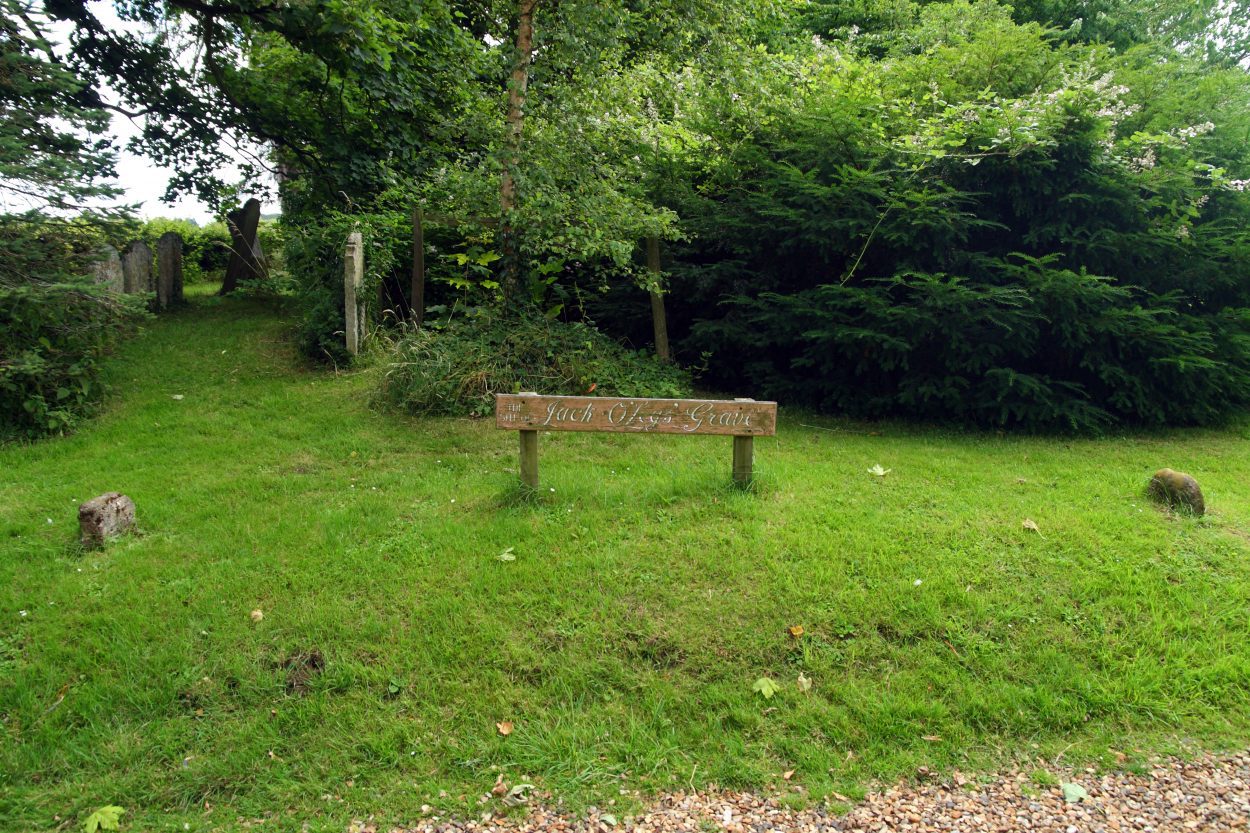Jack O’Legs is a figure obscured in myth or some element of fact, that has parallels with a Robin Hood type character, who stole from the rich to give to the poor.
According to legend, he was a towering giant, tall enough to look through the upper windows of large houses, and carried a huge bow which nobody else could pull.
Jack O’Legs supposedly lived in a cave in the middle of woodland near Baldock in Hertfordshire, England, first mentioned in a 16th century poem called ‘Speak Parrot’ by John SKelton, where a line references “The gibbett of Baldock was made for Jack Leg”.
Baldock was founded by the Knights Templar as a medieval market town in the 1140s, so the origin of Jack O’Legs can be placed between the town’s founding and the creation of the poem.
There are various oral accounts to the story, but the most prominent tells of a terrible harvest one year, resulting in the local bakers to raise the price of flour to an extortionate rate.

Jack O’Legs would lay in wait to ambush the bakers and steal their bread, at a place now called Jacks Hill between the villages of Weston and Graveley.
He distributed the bread amongst the poor, but would eventually be captured unawares by the bakers who blinded and hanged him. As a last request, Jack O’Legs was handed his bow, and buried wherever the arrow would fall. He shot his arrow three miles away into the churchyard of Holy Trinity Church, Weston, where two stones set fourteen and a half feet apart are said to mark his grave.
In the 17th century, the antiquary John Tradescant the Younger purchased a thighbone claimed to belong to Jack O’Legs from the parish clerk, which was passed to the Ashmolean Museum in Oxford and displayed as a ‘Thigh-bone of a Giant’. Later anthropological studies identified it as an elephant’s leg-bone and the specimen was discarded.
Header Image – Mural of the giant Jack O’Legs painted by Patricia Tew in the Grange Junior School in Letchworth in Hertfordshire – CC BY-SA 4.0





